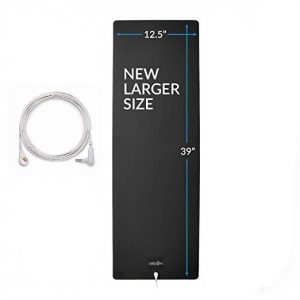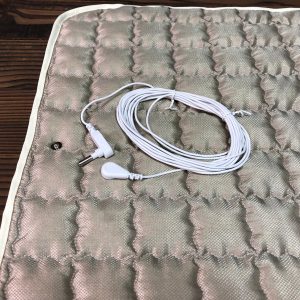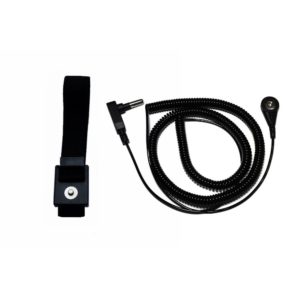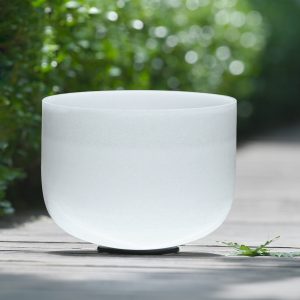Welcome to “The Power of Grounding: Harnessing the Healing Energy of the Earth.” this article will serve as your comprehensive guide to grounding, also known as earthing, a powerful practice that can enhance health, wellbeing, and overall quality of life.
What is Grounding / Earthing?
Grounding, often referred to as earthing, is the process of physically connecting to the Earth’s natural, electrical energy. This connection typically occurs when we walk barefoot on natural surfaces such as grass, sand, or dirt. But it’s not only about walking barefoot – there are other ways to ground oneself, including using grounding technology and gear. Grounding has been part of human life since the dawn of time, yet in our modern world, we’ve largely lost this vital connection to the Earth.
Historical Perspective
Historically, human beings had a close relationship with the Earth. We walked barefoot, slept on the ground, and lived in close harmony with nature. Over time, the advent of modern lifestyle conveniences, such as rubber-soled shoes and indoor living, have disconnected us from the Earth’s natural energy. But now, more and more people are rediscovering this powerful practice.
The Purpose of this Article
The purpose of this article is to provide you with a comprehensive understanding of grounding and its potential benefits. We will explore the science behind grounding, how it affects the human body, and its role in disease prevention and health promotion. This article will also guide you on practical ways to incorporate grounding into your daily life and discuss its specific benefits for various populations.
Whether you’re new to the concept of grounding or have been practicing it for some time, this article aims to deepen your understanding, dispel common misconceptions, and empower you to harness the healing power of the Earth for a healthier, more balanced life.
- $47.99 – $254.49 Select options This product has multiple variants. The options may be chosen on the product page
- $79.99 – $207.99 Select options This product has multiple variants. The options may be chosen on the product page
- $41.49 – $159.99 Select options This product has multiple variants. The options may be chosen on the product page
Understanding Grounding
What Is the Science Behind Grounding?
The Earth, a colossal natural power source, constantly emits a field of free electrons that spread across its surface. Grounding or earthing is the process of physically connecting to this reservoir of electrons, a practice that is increasingly supported by scientific research. At its core, grounding operates on the principle of bioelectrical connectivity. The Earth has a mild negative charge, while the human body, when in contact with the Earth, can absorb these negative ions. This absorption can neutralize free radicals—unstable molecules that can cause harm in your body at the cellular level.
Electrical conductivity exists not only in the realm of technology; it also operates within the biological systems of our bodies. Our heart rhythms, brainwaves, nervous system communications, and cellular processes are all regulated by internal bioelectrical signals. Grounding helps to stabilize these internal bioelectrical processes and contributes to the smooth functioning of the body’s systems.
Benefits of Grounding
Grounding has been associated with a variety of health benefits. Some of the most significant include:
- Reduction of Inflammation: Studies have shown that grounding can reduce inflammation, a common factor in many chronic diseases, by neutralizing free radicals.
- Improved Sleep and Circadian Rhythms: Grounding can help regulate sleep patterns and promote a healthier circadian rhythm by synchronizing the body’s biological clocks with the Earth’s natural cycles.
- Stress Reduction and Mood Improvement: Grounding can help decrease cortisol levels, the body’s main stress hormone, leading to a sense of calm and well-being.
- Improved Cardiovascular Health: Preliminary research suggests that grounding may have a positive impact on heart health by improving blood flow and reducing blood pressure.
- Pain Reduction: Some individuals experience a reduction in chronic pain when practicing grounding, potentially due to its anti-inflammatory effects.
Common Misconceptions About Grounding
While the practice of grounding has gained popularity in recent years, there are still many misconceptions surrounding it. One common misconception is that grounding is a placebo effect, with no scientific basis. However, a growing body of research supports the physiological benefits of grounding.
Another misconception is that grounding requires significant outdoor time and barefoot contact with the Earth. While these methods are effective, grounding can also be achieved through the use of grounding devices such as mats, sheets, and wristbands that can be used indoors.
The last misconception we’ll address here is the belief that all surfaces offer the same benefits. In reality, different surfaces conduct the Earth’s energy to varying degrees. Wet sand, grass, and soil are excellent conductors, while wood, asphalt, and rubber are not.
In this article, we’ll dive deeper into these topics, providing you with the knowledge and tools to integrate earthing into your daily life and experience its numerous health benefits. Join us as we unearth the science and practice of earthing.
- $16.99 – $18.99 Select options This product has multiple variants. The options may be chosen on the product page
- Original price was: $209.99.$191.99Current price is: $191.99. Select options This product has multiple variants. The options may be chosen on the product page
- $47.99 – $254.49 Select options This product has multiple variants. The options may be chosen on the product page
- $33.49 – $93.99 Select options This product has multiple variants. The options may be chosen on the product page
The Human Body and Grounding
The Human Biofield and Its Interaction with the Earth
The human body is not just a physical and chemical structure – it’s also an intricate electromagnetic system, often referred to as the “biofield”. Our bodies produce electrical impulses, which drive our heart rhythm, stimulate our muscles, and enable brain function. The biofield comprises these electrical currents along with the magnetic fields produced by them.
The Earth, too, is teeming with natural electric charge and magnetic fields. When we physically connect with the Earth – a process called grounding – our biofield interacts with the Earth’s electromagnetic field. This exchange has a profound impact on our body, influencing our physiology and overall health.
How Grounding Influences the Body’s Systems
Grounding impacts our body’s systems on several levels:
- Nervous System: Our nervous system is a complex network of electrical signals. Grounding has been found to have a calming effect on the nervous system, promoting relaxation and reducing stress.
- Circulatory System: Grounding can help improve circulation by normalizing the blood’s electrical charge, leading to better delivery of oxygen and nutrients throughout the body.
- Endocrine System: Grounding can influence the regulation of cortisol, a hormone released by the adrenal glands. This can help to regulate the body’s sleep-wake cycle and response to stress.
- Immune System: By neutralizing free radicals and reducing inflammation, grounding can support immune system function.
The Impact of Grounding on Health and Wellbeing
In an era where chronic disease, stress, and sleep disorders are prevalent, grounding has emerged as a simple yet effective technique to support health and wellbeing. Grounding can help to:
- Alleviate chronic pain: Research has shown a reduction in chronic pain symptoms among people who practice grounding regularly.
- Improve sleep quality: Grounding can help to regulate circadian rhythms, leading to improved sleep patterns.
- Enhance mood and reduce stress: Grounding’s calming effect on the nervous system can help to alleviate stress and support mental wellbeing.
- Improve cardiovascular health: By enhancing circulation, grounding can contribute to better heart health.
- Boost immune function: Grounding’s antioxidant effects can support a healthy immune response.
As we delve deeper into the subsequent chapters, we will further explore the mechanisms and benefits of grounding, grounded in both research and practical advice. Join us as we unravel the science and mystery behind this fascinating interaction between our bodies and the Earth.
- $47.99 – $254.49 Select options This product has multiple variants. The options may be chosen on the product page
- $79.99 – $207.99 Select options This product has multiple variants. The options may be chosen on the product page
- $41.49 – $159.99 Select options This product has multiple variants. The options may be chosen on the product page
Grounding and Stress Reduction
The Effects of Stress on the Body
Stress, while a normal part of life, can have profound effects on the body when it becomes chronic. The “fight or flight” response, driven by stress hormones like adrenaline and cortisol, is meant to be a short-term reaction to immediate danger. But in today’s fast-paced society, this response can be triggered frequently, leading to a state of chronic stress. This can impact various aspects of health, including sleep, digestion, immune function, and mental wellbeing, contributing to the development of many health conditions (American Psychological Association, 2021).
How Grounding Counteracts Stress
Grounding has been shown to help counteract stress by influencing the body’s physiological responses. A pilot study by Chevalier et al. (2006) found that grounding during sleep resulted in changes in morning cortisol levels, suggesting a positive impact on stress and sleep.
Moreover, a 2012 review article in the Journal of Environmental and Public Health pointed out that grounding could reduce or even prevent chronic stress and related inflammatory responses by improving the stability of the body’s bioelectrical environment.
Case Studies and Research Findings
Several studies and case reports illustrate the potential benefits of grounding for stress reduction:
- In a 2011 study published in the Journal of Alternative and Complementary Medicine, grounding was found to improve mood, reduce pain, and decrease stress in participants.
- A 2010 study published in the Journal of Bodywork and Movement Therapies found that grounding could improve heart rate variability, a key marker of stress and inflammation.
- A case series published in the Journal of Alternative and Complementary Medicine in 2004 reported improvements in sleep disturbances and chronic muscle and joint pain after grounding, which could indirectly contribute to stress reduction.
Despite the promising research, more studies are needed to fully understand the role of grounding in stress reduction and related health benefits. As you integrate grounding into your routine, remember that it’s part of a holistic approach to stress management, alongside other strategies like balanced nutrition, regular exercise, adequate sleep, and mental health support.
- $41.49 – $159.99 Select options This product has multiple variants. The options may be chosen on the product page
- $33.49 – $93.99 Select options This product has multiple variants. The options may be chosen on the product page
- $40.99 – $149.49 Select options This product has multiple variants. The options may be chosen on the product page
Grounding and Chronic Diseases
Role of Inflammation in Chronic Diseases
Inflammation is a fundamental biological process, serving as the body’s protective response to injury or infection. However, when inflammation becomes chronic, it plays a significant role in the development and progression of various diseases, including heart disease, diabetes, cancer, arthritis, and neurodegenerative disorders. Chronic inflammation can be triggered by several factors such as stress, lack of sleep, poor diet, and environmental toxins (Libby, 2006).
Grounding’s Impact on Inflammation
Grounding, through its interaction with the Earth’s negatively-charged surface, has the potential to neutralize excess positive charges (free radicals) in the body that contribute to inflammation.
A 2015 review article published in the Journal of Inflammation Research detailed grounding’s potential as a “simple, natural, and accessible method of preventing or reducing chronic inflammation and related chronic diseases.” By providing an abundant supply of free electrons to the body, grounding may reduce the adverse effects caused by free radicals in the body, thus mitigating inflammation (Oschman, Chevalier & Brown, 2015).
Research Studies on Grounding and Chronic Diseases
Several studies have begun to explore the impact of grounding on various chronic diseases:
- A 2008 study published in the Journal of Alternative and Complementary Medicine found that earthing during sleep improved health outcomes, such as sleep, pain, and stress, in patients with autoimmune diseases like lupus, rheumatoid arthritis, and multiple sclerosis (Ghaly & Teplitz, 2008).
- In a 2013 study published in the Journal of Alternative and Complementary Medicine, grounding was shown to influence measures of glucose metabolism and possibly thyroid function, which could have implications for managing diseases like diabetes and thyroid disorders (Chevalier & Sinatra, 2013).
- Grounding may also support cardiovascular health. A 2013 study in the Journal of Alternative and Complementary Medicine found that earthing could improve blood viscosity—a major factor in cardiovascular disease (Chevalier, Sinatra, Oschman, Delany, 2013).
These studies represent exciting strides towards understanding the potential role of grounding in disease prevention and treatment. While more research is needed, grounding appears to be a promising adjunctive strategy that can be incorporated into a comprehensive approach to managing chronic diseases.
- $47.99 – $254.49 Select options This product has multiple variants. The options may be chosen on the product page
- $79.99 – $207.99 Select options This product has multiple variants. The options may be chosen on the product page
- $41.49 – $159.99 Select options This product has multiple variants. The options may be chosen on the product page
Practical Grounding
Outdoor Grounding
Outdoor grounding, also known as earthing, is the practice of making direct physical contact with the Earth’s surface. This method is often considered the most natural and effective, as it allows direct contact with the Earth and its free electrons. Here are some common ways to practice outdoor grounding and considerations for each:
- Barefoot Walking: Walking barefoot directly on the Earth’s surface is one of the most straightforward methods of outdoor grounding. This can be done on various surfaces that conduct the Earth’s natural energy, such as grass, sand, or soil. Concrete is also conductive if it’s in direct contact with the Earth. However, wood, vinyl, and asphalt do not allow the Earth’s energy to pass through, and neither do synthetic soles of most shoes.
- Gardening: Working in the garden is another way to connect with the Earth, especially when you have direct contact with the soil. Whether you’re planting new flowers or tending to your vegetable garden, touching the soil and plants with your hands is a beneficial grounding practice. Remember to practice safe gardening, use gloves if needed, and wash your hands thoroughly afterward.
- Swimming in Natural Bodies of Water: Natural bodies of water like lakes, rivers, and the ocean are excellent conductors of Earth’s energy. When you swim, your body gets enveloped in water, allowing for extensive contact and a significant exchange of energy.
- Outdoor Meditation or Yoga: Performing meditation or yoga outdoors while barefoot can help to deepen your experience. The combination of these mindful practices with the physical connection to the Earth can be incredibly calming and restorative.
While earthing outdoors is typically safe, some precautions are necessary. If you’re walking barefoot, be aware of potential hazards like sharp objects or rough surfaces. In gardening, ensure to use safe practices and protect your hands when needed.
For those with sensitivities or allergies, be mindful of any reactions to plants or insects. Finally, if swimming, always prioritize safety first. Avoid swimming alone in unfamiliar bodies of water, and be aware of currents and water cleanliness. Outdoor grounding offers a chance to connect deeply with nature while gaining the potential health benefits. Incorporate it into your daily routine, and over time, you may see improvements in your overall well-being.
Indoor Grounding
Grounding or earthing products are devices that connect users with the Earth’s natural electric charge while indoors. They usually come in forms that are easy to incorporate into daily routines, such as sleeping, working at a desk, or sitting to relax. Here are some common types of grounding products:
Grounding Mats: These mats are typically made from a conductive material such as carbon or silver that can transfer the Earth’s natural energy. They can be used in a variety of ways – placed under a computer keyboard and mouse, under your bare feet, or even as a sleep surface.
- Grounding Sheets and Bed Pads: These products are designed to be used on beds for grounding during sleep. They are typically made with conductive materials interwoven throughout, such as silver fibers threaded through cotton fabric. The user makes skin contact with the sheet or pad, ideally with bare feet, to receive the grounding benefit throughout the night.
- Grounding Wristbands and Anklets: These are worn around the wrist or ankle and are often made with conductive materials (like a stainless-steel fiber or silver fabric) that come into direct contact with the skin. A cord is usually attached to the band and plugged into a grounding socket, ensuring a constant connection to the Earth’s energy.
- Grounding Socks and Patches: Grounding socks are made from conductive materials and can be used in conjunction with grounding mats, sheets, or bed pads. Patches can be applied to any part of the body and are particularly useful for targeting specific areas of discomfort.
- Grounding Shoes: These shoes typically have soles made from natural, conductive materials, like leather, and contain a conductive metal rod that connects the footbed to the ground, facilitating earthing.
All these products work by connecting to the ground port of an electrical outlet or a grounding rod outside. The outlet or rod is, in turn, grounded to the Earth, providing a path for the Earth’s electrons to flow into the product and then into the body.
As always, it’s important to follow manufacturer instructions when using grounding products. Some products require periodic care or replacement, like washing grounding sheets with a non-oxidizing, bleach-free detergent, or replacing worn grounding shoe inserts. Additionally, grounding products should always be used in a safe environment, away from water or potential electric shock hazards.
Precautions While Grounding
While grounding is generally considered safe, there are a few precautions to keep in mind. If you’re outside, be aware of potential hazards such as extreme temperatures, sharp objects, and harmful insects or plants.
For indoor grounding, it’s important to ensure that the electrical system in your home is properly grounded. When using grounding tools, follow the manufacturer’s instructions carefully.
Grounding as a Part of a Balanced Lifestyle
Remember, grounding is not a cure-all for health issues but a tool that can support your overall health and wellness. For the best results, incorporate grounding as part of a balanced lifestyle that includes a nutrient-rich diet, regular physical activity, sufficient rest, and stress management practices.
In the next chapter, we will discuss in-depth how you can seamlessly integrate grounding into your daily routine, whether you’re at home, at work, or on the go. Stay tuned for more practical tips on making grounding a regular part of your health and wellness regimen.
- $47.99 – $254.49 Select options This product has multiple variants. The options may be chosen on the product page
- $41.49 – $159.99 Select options This product has multiple variants. The options may be chosen on the product page
- $79.99 – $207.99 Select options This product has multiple variants. The options may be chosen on the product page
- Original price was: $209.99.$191.99Current price is: $191.99. Select options This product has multiple variants. The options may be chosen on the product page
Grounding for Special Populations
Grounding can be practiced by anyone, but certain populations may have unique considerations or potential benefits. This chapter focuses on grounding in relation to the following special populations: athletes, elderly individuals, pregnant women, and individuals with chronic diseases.
Athletes
Athletes put their bodies under a lot of stress during training and competition, leading to increased oxidative stress and inflammation. Grounding may help mitigate these effects by reducing inflammation, improving sleep, and accelerating recovery. Remember, it is essential for athletes to consult their healthcare provider or a sports medicine specialist before incorporating grounding into their recovery regimen.
Elderly Individuals
Elderly individuals may experience conditions such as poor circulation, arthritis, or sleep disturbances – all areas where grounding could potentially provide benefits. Grounding practices such as walking barefoot or using grounding mats may help improve sleep quality, reduce chronic pain, and improve overall well-being.
Pregnant Women
While grounding could potentially have benefits for pregnant women, such as reducing inflammation and improving sleep, it’s especially important for pregnant women to consult a healthcare professional before starting any new health practice, including grounding.
Individuals with Chronic Diseases
People with chronic diseases like cardiovascular disease, chronic pain conditions, or autoimmune diseases often have high levels of chronic inflammation. Grounding may help to manage this inflammation, though more research is needed in this area. Always consult with a healthcare provider before incorporating grounding into a treatment plan for chronic diseases.
This chapter is not exhaustive, and there may be other special populations who could potentially benefit from grounding, including children, individuals with mental health conditions, and people recovering from surgery or injury. Always consult a healthcare provider for advice tailored to your specific circumstances and needs.
- $47.99 – $254.49 Select options This product has multiple variants. The options may be chosen on the product page
- $33.49 – $93.99 Select options This product has multiple variants. The options may be chosen on the product page
- Original price was: $209.99.$191.99Current price is: $191.99. Select options This product has multiple variants. The options may be chosen on the product page
- $40.99 – $149.49 Select options This product has multiple variants. The options may be chosen on the product page
Grounding and Sleep
The Importance of Sleep for Health
Sleep plays a critical role in good health and well-being. Quality sleep at the right times helps protect your mental health, physical health, and overall quality of life. It is essential for various functions of the body such as healing and repair of heart and blood vessels, supporting growth and development, improving learning and memory functions, and regulating mood.
Grounding and Sleep Quality
Emerging research suggests that grounding can have a positive impact on sleep quality. The grounding effect, with its potential to neutralize inflammation and promote overall relaxation, might enhance both the duration and quality of sleep.
In one pilot study conducted by Ghaly and Teplitz (2004), participants who slept on conductive mattress pads (grounding pads) reported significant improvements in sleep quality and reduced pain and stress. They proposed that grounding during sleep enhances the natural healing and regenerative processes that occur during sleep.
Tips for Grounding During Sleep
Practicing grounding during sleep can be an effective way to incorporate this practice into your daily routine. Here are a few ways you can ground while you sleep:
- Grounding Sheets and Bed Pads: As we mentioned in Chapter 5, grounding sheets and bed pads are an easy way to gain the benefits while you sleep. These products are typically connected to the grounding port of an electrical outlet or a grounding rod outside.
- Barefoot Contact: If it’s safe and comfortable for you, consider spending part of your sleep time making direct contact with the Earth. This could involve sleeping outside in a safe location, or in a structure with a natural dirt floor.
- Indoor Grounding Tools: If outdoor grounding is not feasible, consider using an indoor grounding mat. This can be placed under your bed to mimic the Earth’s natural charge.
Remember, it’s essential to speak with a healthcare provider before starting any new health practices, including grounding during sleep. It is especially important for individuals with health conditions, pregnant women, and elderly individuals to consult a healthcare professional.
In the next chapter, we will explore some frequently asked questions about grounding, addressing common concerns and misconceptions, and providing practical advice for those new to this practice.
- $47.99 – $254.49 Select options This product has multiple variants. The options may be chosen on the product page
- $79.99 – $207.99 Select options This product has multiple variants. The options may be chosen on the product page
- $41.49 – $159.99 Select options This product has multiple variants. The options may be chosen on the product page
Frequently Asked Questions
Common Questions about Grounding
1. Does grounding work through any material?
Grounding works best when there is direct contact with the surface of the Earth, as materials like concrete, soil, and water are good conductors. Synthetic materials like rubber and plastic are not good conductors and won’t facilitate grounding.
2. Can I ground while wearing shoes?
It depends on the material of your shoes. Grounding is possible through leather since it absorbs moisture from the environment and your feet, which can help facilitate conduction. However, rubber and synthetic materials do not allow grounding.
3. How long do I need to ground each day?
There’s no set “dosage”. Some research suggests benefits from as little as 30 minutes to an hour per day, but this can vary based on individual circumstances.
4. Do I have to be outdoors to ground?
While grounding traditionally involves direct contact with the Earth’s surface outside, there are many grounding tools such as mats, sheets, and wristbands that allow you to ground indoors.
5. What is the best time to practice grounding?
You can practice grounding at any time that is convenient for you. Some people find it particularly beneficial first thing in the morning or in the evening before bed, as it can help to start or end the day in a calm and balanced state.
6. Can I ground if I live in a city or urban environment?
Yes, you can still ground in an urban environment. Parks, community gardens, and even your own backyard (if you have one) are great places for grounding. If these aren’t accessible, grounding tools for indoor use are an excellent alternative.
Addressing Safety Concerns
1. Is grounding safe?
Grounding is generally considered safe. However, when grounding through an electrical outlet, make sure the outlet is properly grounded to avoid potential hazards.
2. Can I get too many electrons from grounding?
No. The human body is a self-regulating organism. It takes only what it needs and no more. The body only absorbs as many negatively charged electrons as it can use to neutralize the positively charged free radicals.
3. Can grounding interfere with the operation of a pacemaker or other medical devices?
There’s currently no evidence to suggest that grounding interferes with the operation of pacemakers or other medical devices. However, if you have a medical device and are considering grounding, it’s always a good idea to discuss it with your healthcare provider.
Grounding in Different Weather Conditions
1. Can I ground in the winter or when it’s cold outside?
Yes, but consider your comfort and safety first. You may not want to walk barefoot in the snow, for example. However, grounding tools for indoor use can be a great alternative when outdoor grounding is not feasible.
2. Is it safe to ground during a thunderstorm?
If you’re outside and there’s a thunderstorm, it’s best to go indoors as a safety precaution. The risk of being struck by lightning is low, but it’s better to be safe. For indoor grounding, unplug any grounding devices during a thunderstorm to avoid potential electrical surges.
3. Is it possible to ground when it’s raining?
Yes, it’s possible to ground in the rain, and wet surfaces can actually be better conductors. However, be aware of your safety and comfort – if it’s cold, or if the rain is heavy, it might be better to ground indoors with a grounding device.
- $47.99 – $254.49 Select options This product has multiple variants. The options may be chosen on the product page
- $33.49 – $93.99 Select options This product has multiple variants. The options may be chosen on the product page
- Original price was: $209.99.$191.99Current price is: $191.99. Select options This product has multiple variants. The options may be chosen on the product page
- $40.99 – $149.49 Select options This product has multiple variants. The options may be chosen on the product page
Conclusion: The Future of Grounding
As we come to the end of this grounding journey, it’s essential to look forward to the emerging research and potential advancements in our understanding of this practice. The scientific community continues to explore the many implications of grounding, from its impact on chronic diseases to its role in stress management, sleep improvement, and general wellbeing.
The potential for further integration of grounding into medical and wellness practices is vast. As technology and research methodologies advance, we may see even more nuanced understandings of grounding’s effects on our bodies, down to the cellular level.
A Look at the Scientific Community’s Research Agenda
With an increasing interest in natural and holistic health practices, the scientific community has been prioritizing research around grounding. Future studies may delve into areas like:
– The long-term effects of regular grounding practice on health and longevity.
– The specific impacts of grounding on various types of chronic diseases.
– The precise mechanisms by which grounding influences our body’s bioelectrical environment.
Your Personal Grounding Journey
The journey of grounding is an intensely personal one. Everyone’s experiences and benefits may differ based on numerous factors, including individual health status, lifestyle, and consistency in practicing grounding techniques. This article should serve as a stepping stone in your grounding journey, providing the basics you need to start and continue exploring this practice. Consider keeping a journal to track your experiences, changes, and improvements over time. Remember, grounding is not a magic cure; it’s a tool to supplement a balanced lifestyle for overall health and wellbeing.
Appendix
Additional Resources for Learning More about Grounding
For further exploration into the world of grounding, consider the following resources:
– Books: “Earthing: The Most Important Health Discovery Ever!” by Clinton Ober, Dr. Stephen T Sinatra, and Martin Zucker
– Websites: Earthing Institute, Grounded.com
– Scientific Databases: PubMed, Google Scholar (search for “grounding” or “earthing”)
Thank you for joining us on this journey of understanding and exploring grounding. We hope this article has empowered you with knowledge and tools to integrate grounding into your everyday life, contributing to a healthier, balanced, and more connected existence.
References
– American Psychological Association (2021). Stress effects on the body. https://www.apa.org/topics/stress-body
– Chevalier, G., Mori, K., & Oschman, J. L. (2006). The effect of earthing (grounding) on human physiology. European Biology and Bioelectromagnetics.
– Chevalier, G., Sinatra, S. T., Oschman, J. L., Sokal, K., & Sokal, P. (2012). Earthing: health implications of reconnecting the human body to the Earth’s surface electrons. Journal of Environmental and Public Health, 2012.
– Chevalier, G., Sinatra, S. T., Oschman, J. L., & Delany, R. M. (2013). Earthing (grounding) the human body reduces blood viscosity—a major factor in cardiovascular disease. Journal of Alternative and Complementary Medicine, 19(2), 102–110.
– Chevalier, G., & Sinatra, S. T. (2013). Emotional stress, heart rate variability, grounding, and improved autonomic tone: Clinical applications. Integrative Medicine: A Clinician’s Journal, 12(3), 16–21.
– Ghaly, M., & Teplitz, D. (2004). The biologic effects of grounding the human body during sleep as measured by cortisol levels and subjective reporting of sleep, pain, and stress. Journal of Alternative and Complementary Medicine, 10(5), 767-776.
– Libby, P. (2006). Inflammation and cardiovascular disease mechanisms. The American journal of clinical nutrition, 83(2), 456S-460S.
– Oschman, J. L., Chevalier, G., & Brown, R. (2015). The effects of grounding (earthing) on inflammation, the immune response, wound healing, and prevention and treatment of chronic inflammatory and autoimmune diseases. Journal of Inflammation Research, 8, 83–96.
– Ober, C., Sinatra, S. T., & Zucker, M. (2010). Earthing: The most important health discovery ever? Basic Health Publications, Inc.
– Brown, R., Chevalier, G., & Hill, M. (2015). Pilot study on the effect of grounding on delayed-onset muscle soreness. Journal of Alternative and Complementary Medicine, 17(3), 212-216.
– Libby, P. (2006). Inflammation and cardiovascular disease mechanisms. The American journal of clinical nutrition, 83(2), 456S-460S.
– Earthing Institute. (n.d.). Research. [Webpage]. Retrieved from https://earthinginstitute.net/research/
– Grounded.com. (n.d.). What is grounding? [Webpage]. Retrieved from https://grounded.com/what-is-grounding
These references represent the current body of research related to earthing. They provide scientific evidence for some of the claims made in the text about the potential health benefits of earthing. As with any health practice, it is important to approach the practice of earthing with a sense of personal responsibility and in consultation with healthcare professionals.
















